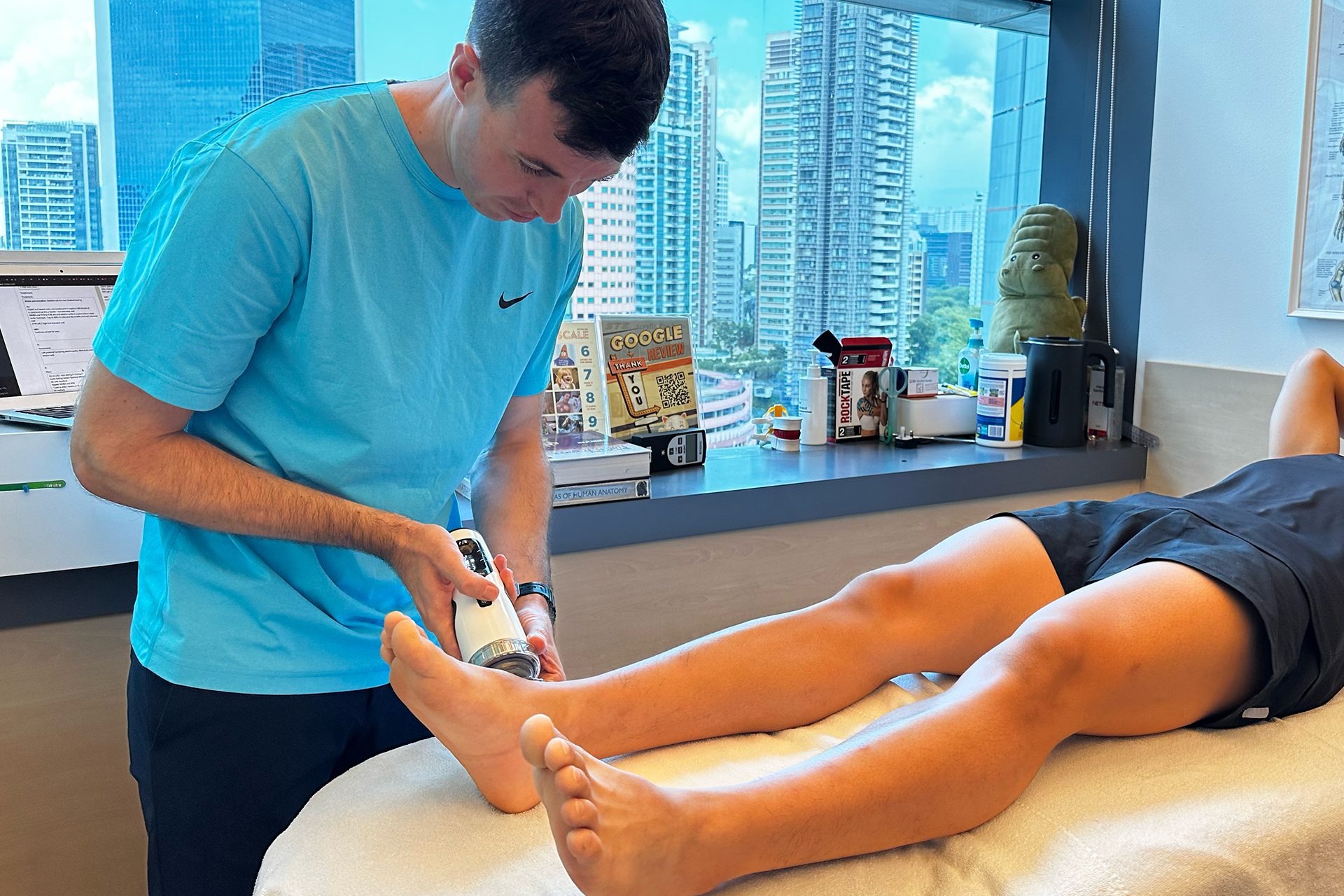Treatment for Ankle Fractures
Conservative treatments play a pivotal role in the rehabilitation for ankle fractures. They employ immobilization to protect the integrity of the healing bones and alleviate pain during the initial healing phase.
At HelloPhysio, our strategy for managing ankle fractures is thorough and patient-centric. Our experienced multidisciplinary team evaluates diverse recovery aspects, including the patient’s lifestyle, exercise habits, and individual healing responses. We offer manual therapy, adjunctive therapies, and prescriptive exercise programs to treat symptoms and restore mobility effectively.
Our treatment modalities are designed to work together to enhance mobility and rebuild muscular strength. We focus particularly on supporting bone healing and preventing future injuries. This comprehensive approach ensures optimal, lasting recovery.
Integrated therapies for ankle fracture recovery start with addressing the specific challenges bone healing poses.
Initial treatment often involves immobilizing the fracture site to ensure proper alignment and stability as the bone heals, minimizing movement that could disrupt the healing process. During later stages of recovery, INDIBA® Activ can enhance local blood circulation around the fracture site, supplying essential nutrients and oxygen to support bone healing and reduce inflammation.
Once the bone has sufficiently healed to tolerate gentle pressure, Shockwave Therapy can be introduced to improve bone density and address soft tissue complications, such as scar tissue formation, arising from the immobilization period.
Tailored manual therapy and prescribed exercises gradually rebuild ankle and lower leg muscle strength by improving mobility, reducing pain and restoring function. It can help alleviate compensatory strain on surrounding muscles and connective tissues without overloading the healing ankle. This promotes overall limb function and potentially reduces the risk of complications due to altered gait patterns.
Book an Appointment
Exploring the Mechanism of Ankle Fractures
An ankle fracture involves a break in one or more of the three bones that constitute the ankle joint: the tibia, fibula and talus. The mechanism of an ankle fracture usually involves direct trauma or stress that exceeds the bone’s capacity to absorb force. This can occur through sudden impacts, awkward landings or excessive twisting motions. The physiological repercussions of such an injury significantly impact a person’s movement patterns, influencing the approach and objectives of physiotherapy.
The ankle joint plays a vital role in proprioception, or kinesthesia, which is our body’s ability to sense movement, action, and location. Without proprioception, we lose our sense of body position in space and won’t be able to move without thinking about our next step. An ankle fracture can disrupt how the body receives signals from the joint, impairing balance and coordination, which are essential for safe and efficient movement.
Immediate responses to an ankle fracture include pain and swelling, which are protective mechanisms to limit movement and promote healing. However, these responses also lead to compensatory movement patterns, as individuals adjust their gait and weight bearing to minimize discomfort, potentially leading to imbalances and strain in other body areas.
Swelling and injury to the joint structures restrict the ankle’s range of motion. Limited dorsiflexion and plantarflexion reduce the foot’s ability to roll from heel to toe during walking, affecting overall gait dynamics. Immobilization following an ankle fracture can also result in muscle weakness and atrophy in the injured leg and throughout the body due to reduced activity levels. Weakened muscles will contribute to instability and further alter movement patterns.
Connect with Physiotherapists and Rehabilitation Team
At HelloPhysio, our seasoned clinical health practitioners actively guide you through your ankle fracture rehabilitation. Our senior physiotherapists and rehabilitation team, highly skilled in musculoskeletal dysfunctions, orthopedic disorders, acute conditions, and sports injuries, are committed to your recovery.
To discover more about our comprehensive ankle fracture treatment, contact or call our clinics to discuss or schedule a consultation with our team.

